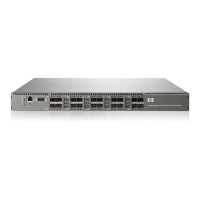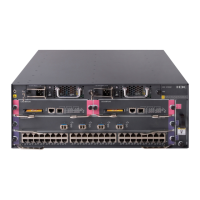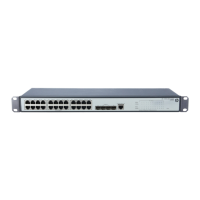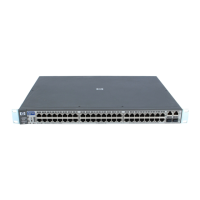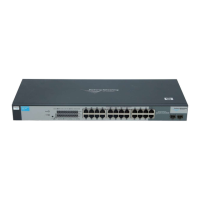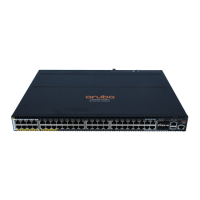70
SNMP v3 Security
Simple Network Management Protocol Version 3 (SNMPv3) is an interoperable standards-based protocol
for network management. SNMPv3 provides secure access to devices using a combination of
authenticating and encrypting packets over the network. SNMP v3 security is an additional layer of
security. The SNMP v3 security is available on a secure (SSL) entry switch. The security features provided in
SNMPv3 are:
• Message integrity—Ensuring that a packet has not been tampered with during transit.
Read Community Read community password (up to 32 characters) that
authorizes an SNMP agent to read information from the
switch. This is a write-only field. The Read Community value
on the switch and the SNMP management server must be
the same. The default is public.
SNMP Proxy Enables or disables the use of SNMP to monitor and
configure switches in the fabric.
Location Specifies the name (up to 64 characters) for the switch
location. The default is <sysLocation undefined>.
Authentication Trap Enables or disables the reporting of SNMP authentication
failures. If enabled, a notification trap is sent when incorrect
community string values are used. The default value is
False.
Write Community Write community password (up to 32 characters) that
authorizes an SNMP client to write information to the switch.
This is a write-only field. The value on the switch and the
SNMP management server must be the same. The default
value is private.
Trap Version Specifies the SNMP version (1 or 2) with which to format
traps.
Trap 1 Enabled Enables or disables the trap. If disabled, traps are not sent
to trap monitoring stations and the trap settings are not
configurable.
Trap Address Specifies the IP address to which SNMP traps are sent. A
maximum of 5 trap addresses are supported. The default
address for trap 1 is 10.0.0.254. The default address for
traps 2–5 is 0.0.0.0.
Trap Community Trap community password (up to 32 characters) that
authorizes an SNMP agent to receive traps. This is a
write-only field. The value on the switch and the SNMP
management server must be the same. The default is
public.
Trap Severity Specifies a severity level to assign to the trap. Open the
drop-down list and choose a level. The Trap 1 Enabled
option on the SNMP Properties dialog box must be enabled
to access this drop-down list. Trap severity levels include
Unknown, Emergency, Alert, Critical, Error, Warning,
Notify, Info, Debug, and Mark
Trap Port Specifies the port number (between 1—65535) on which a
trap is set. The default is 162.
Table 13 SNMP Properties dialog box fields (Continued)
Field Description
